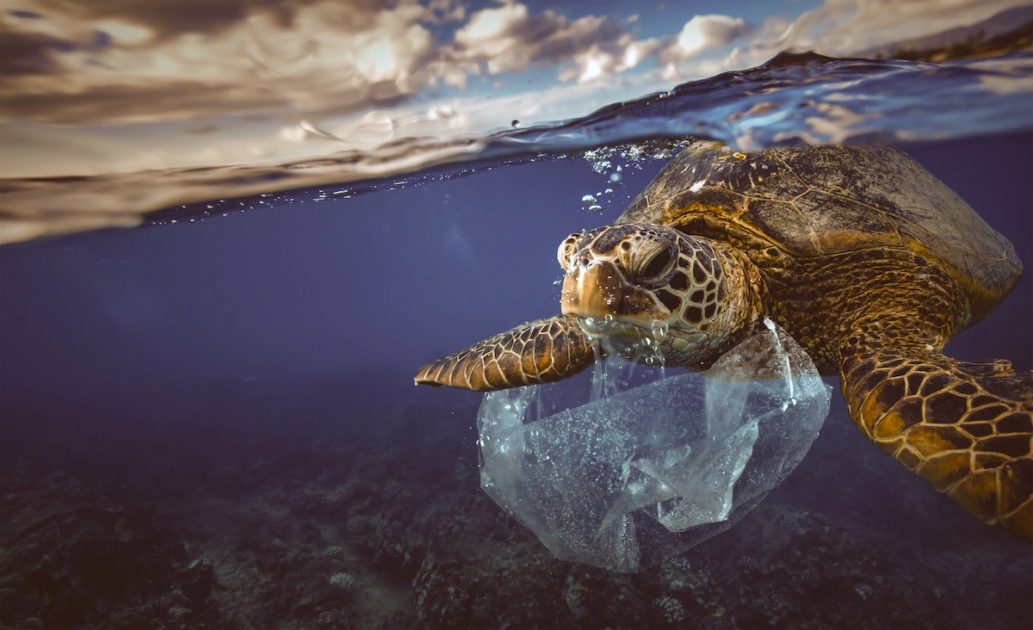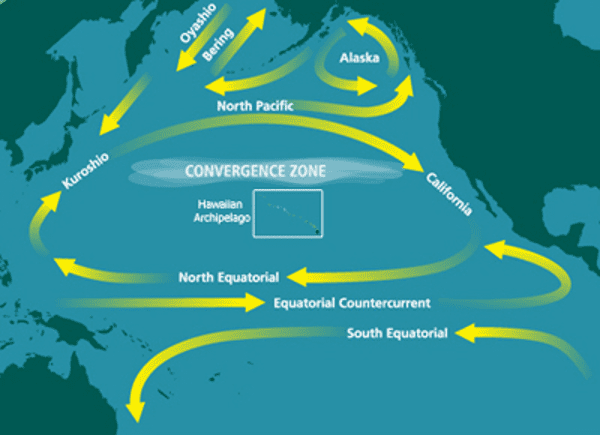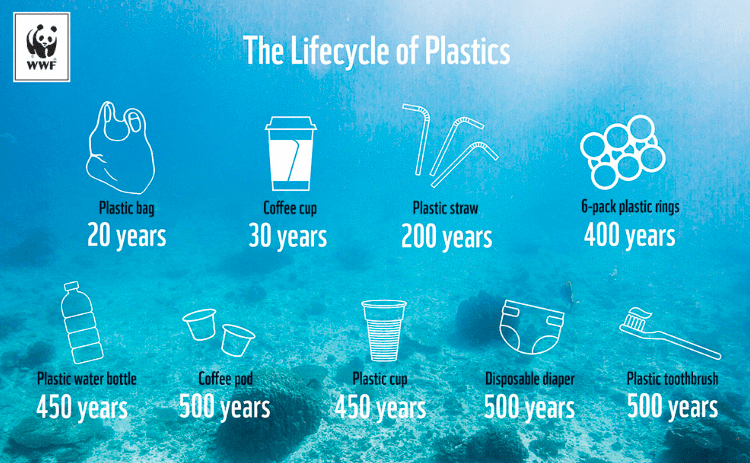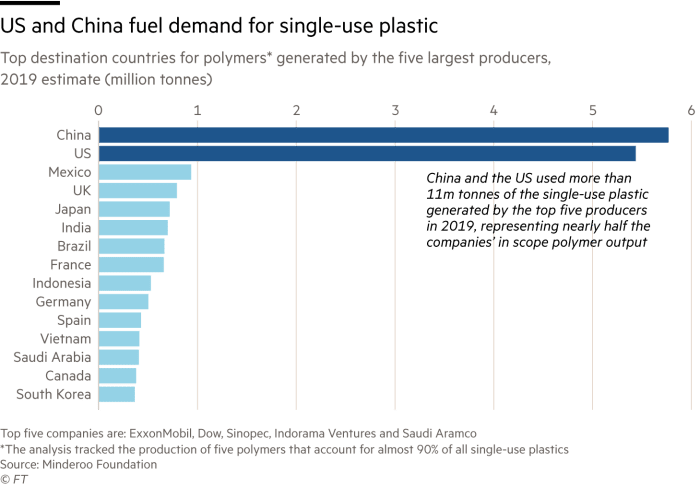
The convenience of single-use items comes with a massive environmental cost. Unknowingly, your day is probably filled with single-use items that will eventually fill landfills and the ocean. The disposable coffee cups you grab in the morning from your local shop are made with hard-to-recycle materials such as styrofoam, polyethylene, or polypropylene. And the plastic straws? They’re just as dreadful for the environment.
We are producing over 380 tons of plastic every year, and it’s estimated that 50% of that is for single-use purposes.1 However, other materials besides plastic, such as paper, cardboard, styrofoam, and more, are just as bad. It’s time to become more aware of these materials and the single-use items we use regularly. That way, we will help to create a more circular economy for a far more sustainable future.
Around 40% of single-use plastics are consumed and then discarded.2 Additionally, between 5 and 13 million tons of plastic is estimated to end up in the ocean every year. Single-use plastics need hundreds of years to break down in landfills. Disposable plastic items, such as plastic straws, coffee stirrers, food packaging, bags, and water bottles, never break down completely.3 Instead, they degrade and become microplastics. Plastic has an abundance of negative effects on the environment:
Every year, animals are killed by plastic. Approximately 700 species, even some that are endangered, have been affected by the material.4 Also, more than 100 aquatic species have been found with microplastics inside them, which can lead to pierced organs or digestive tract issues that can potentially lead to death.
Many seabirds, turtles, fish, and marine mammals are found with plastic bags or fishing gear in their stomachs. Currently, marine litter is 60% to 80% plastic, leaving these animals to constantly be ingesting toxic seawater that is full of chemicals from plastic decomposition.5
The oceans are filled with trash, especially single-use plastic items. Our throw-away lifestyle is negatively affecting almost all areas of our ecosystem, especially the ocean.
Every year, 8 million tons of plastic enter the ocean, which is equivalent to one truckload dumped into the ocean every minute of the day. Currently, unless it’s burned, almost every piece of plastic that’s ever been created still exists today. When these plastics enter the ocean, their effects can be felt for centuries.6
The Pacific Trash Vortex, which is in the North Pacific Ocean, holds an exceptionally high concentration of single-use plastics that have been trapped by currents. It is estimated to be twice the size of Texas, and according to research, its contents are rapidly accumulating.

The Span of the Pacific Trash Vortex. Source: Wikipedia
When disposable plastics degrade in the environment, they emit greenhouse gasses. After the plastic is exposed to sunlight, it produces methane and ethylene. These two gasses are detrimental to the environment. It is reported that emissions from the life cycle of plastic accounts for 3.8% of global greenhouse gas emissions.7 Once released, these gasses can be toxic and have adverse effects on the animal and plant habitat.
It is estimated that in 2050, carbon dioxide (CO2) emissions from plastic could grow to more than 2.75 billion tons. Additionally, this also means that plastic will be responsible for up to 13% of the total “carbon budget,” which is equivalent to 615 coal-fired power plants.8 The plastic binge we’ve been on is threatening the Paris Agreement, which is a legally binding international treaty on climate change.

Source: WWF
Single-use items aren’t always packaged in plastic. There is a multitude of other unsustainable materials that are also heavily used and just as detrimental to the environment. A few of these materials that you likely come across daily are:

Source: Financial Times
Avoiding extra waste is key to reversing the environmental crisis we are currently facing. It is hard to avoid single-use items these days; however, many companies are creating innovative alternatives. By becoming aware of the negative impacts of single-use packaging and how commonly we succumb to them, the change can begin.
Here are a few of the worst offending single-use items and their alternatives:
Did you know that around 25% of bottled water is actually just tap water?12 80% of plastic water bottles end up in landfills. And for each bottle, it takes 1,000 years to fully break down. As they decompose, they leak harmful chemicals into the atmosphere.
Alternatives: Opt for a reusable water bottle and invest in a tap filter at home or a filtering jug. Check out this reusable water bottle that is made out of 50% recycled material!
Each paper cup, taking into account the paper, the sleeve, the production, and shipping, emits around 0.11 kilograms of CO2.13 Additionally, paper cup production results in ecosystem degradation, a reduction of the planet’s carbon absorption capacity, and the loss of trees. 4 billion gallons of water are wasted every year to produce single-use cups and enough energy to power 54,000 homes.14
Alternatives: Bring your own reusable travel mug to your favorite coffee shop in the mornings. Here’s one that is insulated and has a handle so the barista can pour your drink of choice with ease.
It is estimated that in the United States alone, 40 billion plastic utensils are wasted every year. Plastic utensils, even when put in the recycling bin, don’t often get recycled because of food contamination and incompatibility with sorting equipment due to their small size and light weight.15
The #CutOutCutlery campaign is asking many businesses, such as Grubhub, Postmates, and UberEats, to include an option on apps for customers to decide if they want utensils included with their delivery. This would make opting out of disposable utensils the default choice.
Alternatives: There are lots of biodegradable utensils available, such as this set that’s made out of 100% untreated bamboo that’s cultivated without pesticides and fertilizers. The utensils are also BPA-free and recyclable.
Around 20 billion tampons and pads are dumped into the landfill every year. Conventional pads contain the equivalent of about four plastic bags! Additionally, the polyethylene plastic in pads can take hundreds of years to decompose.16
Alternatives: Invest in reusable pads. Try grabbing some from Rael, which is a great mission-driven brand. You can also try a menstrual cup from DivaCup if you aren’t a fan of pads.
You’ve probably seen the viral video of the sea turtle that had a plastic straw stuck in its nose. It was horrible to see, but it probably made you rethink using plastic straws. As it is, 500 million straws are used daily in the United States.17 Due to the chemicals that most straws are made of, they can’t be recycled. Additionally, the majority of plastic straws are not biodegradable and cannot be broken down naturally by bacteria and other decomposers into non-toxic materials.
Alternatives: FinalStraw created an innovative alternative to plastic straws by making a reusable silicone and stainless steel hybrid straw. It also collapses to make keeping it on hand easier.
Making simple swaps, like purchasing a reusable water bottle, coffee container, or straw, can spare the environment tons of unsustainable waste each year. Here are a few tips for ridding your life of single-use items for good:
The Human Beauty Movement and Humanist Beauty have had the last straw. We’ve signed the #StopSingleUse petition and pledged to not sell or distribute any items that are used once and thrown away, such as sheet masks, pads, wipes, sample packets, and other single-use products. We are very aware of how single-use items negatively impact the environment and are actively striving for a cleaner, more sustainable planet.
Join us and Credo Beauty, the creator of the petition, to get rid of the items we use for minutes and then toss in the trash. Sign your name here to show your support.
—
https://cbmjournal.biomedcentral.com/articles/10.1186/s13021-018-0115-3 [3]
https://www.biologicaldiversity.org/campaigns/ocean_plastics/ [4]
https://plastic-pollution.org/ [5]
https://cbmjournal.biomedcentral.com/articles/10.1186/s13021-018-0115-3 [9]
https://friendsoftheearth.uk/sustainable-living/plastic-periods-menstrual-products-and-plastic-pollution#:~:text=One%20estimate%20is%20that%20pads,)%20and%20polypropylene%20(PP) [16]

Disclaimer: Statements on this website have not been evaluated by the FDA. These products are not intended to diagnose, mitigate, treat, cure, or prevent any disease, nor are the products intended to affect the structure or any function of the body of man/woman or other animals. CANNABIDIOL USE WHILE PREGNANT OR BREASTFEEDING MAY BE HARMFUL. KEEP OUT OF REACH OF CHILDREN. Humanist Beauty Herban Wisdom products include hemp extract that contain less than 0.3% THC. Products containing CBD or THC are not to be used by or sold to persons under the age of 21.
We don’t retouch the skin of the model humans shown on this website. Keepin’ it real.